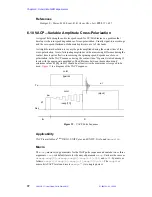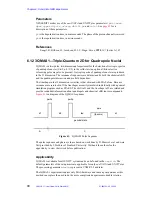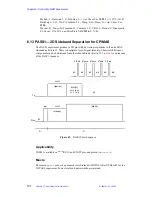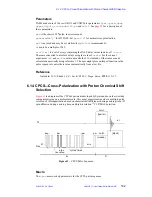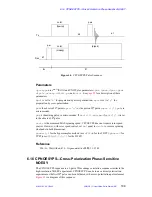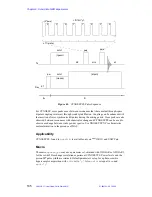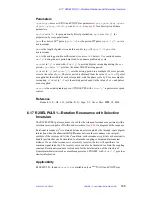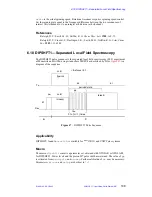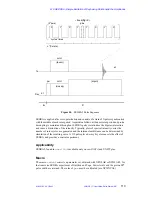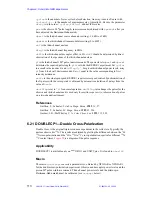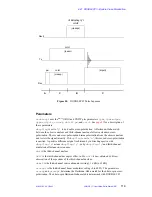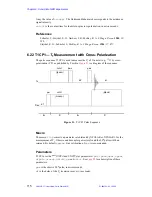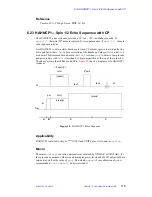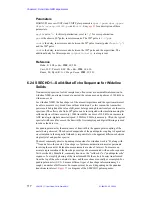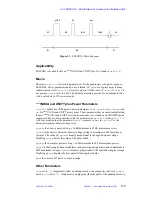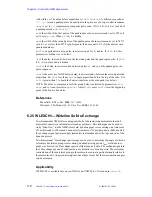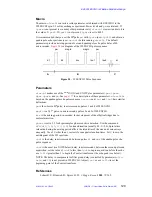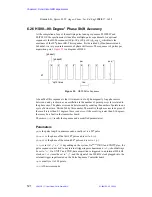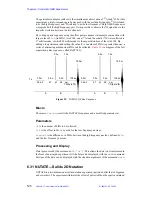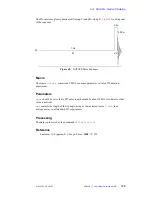
Chapter 6. Solid-State NMR Experiments
111
VNMR 6.1C User Guide: Solid-State NMR
01-999162-00 C0402
Parameters
sedra2
uses
UNITY
INOVA and UNITYplus parameters
tpwr
,
tpwrm
,
dpwr
,
cppwr
,
dipolr
,
crossp
,
dblvl2
,
pw
, and
cntct
. See
for a description of these
parameters.
pwx
is the observe 90
°
pulse, in
µ
s. It determines the length of
π
pulses of SEDRA.
cycles
is the number of 8-pulse SEDRA cycles before acquisition. Each SEDRA cycle
has a length of 8 rotor periods and a
π
pulse is applied at the middle of each rotor period.
Usually
cycles
is an integer from 0 to the maximum number of cycles. Typical values are
0 to 8.
sedraflag
set to
'n'
causes a 90
°
pulse to be applied at the middle of each 8 pulse
SEDRA cycle. This pulse partially refocuses the effects of SEDRA and provides a control.
If
sedraflag
is set to
'y'
, a 90
°
pulse is not applied, allowing full SEDRA evolution.
Usually,
sedraflag
is set to
'n','y'
. For a simultaneous array of
cycles
and
sedraflag
, set
array
to
'cycles,sedraflag'
, and not the reverse.
phaseflag
is set to
'n'
for normal operation. If
phaseflag
is set to
'y'
and
sedraflag
is set to
'n'
, 90
°
pulses are applied with 180
°
phase alternation for
successive SEDRA cycles. Better refocusing of the control pulse sequence should lead to a
larger SEDRA effect.
(Caution: setting
phaseflag
to
'y'
is not fully tested.)
Reference
Guillion, T.; Vega, J. Chem. Phys. Lett. 1993, 194, 423.
6.20 REDOR1—Rotational Echo Double Resonance
NMR measurement of internuclear distance, by using multidimensional methods, has been
of great importance for the determination of biomolecular structures in solution. It is
desirable to obtain similar data from the solid-state for study of membrane protein
structures that have been largely inaccessible with solution state methods. REDOR,
Rotational Echo Double Resonance, is a useful approach to this goal.
is a diagram
of the pulse sequence.
The REDOR experiment provides internuclear distance data between a pair of heteronuclei
(often
13
C and
15
N) by means of their mutual dipolar interaction. REDOR is a high-
resolution solids experiment and is therefore performed with magic angle spinning, MAS,
and usually proton cross-polarization, CP. The heteronuclear dipolar interaction is partially
averaged by MAS. Multiple
13
C and
15
N pulses, synchronized with the MAS rotor speed,
reintroduce dipolar information into the spectrum as a variation of spectral intensity with
time. Because REDOR is often performed with cross-polarization and proton decoupling,
it is a triple-resonance experiment requiring a three channel spectrometer and a triple-
resonance probe.
After initial cross-polarization, a variable number of
π
pulses are applied to the
13
C
channel, each synchronized with the end of successive rotor periods, with acquisition
beginning at the following rotor period. At the middle of each rotor period,
π
pulses are
applied to the
15
N channel. These
15
N pulses cause signal loss, due to the dipolar
interaction. A spectrum without
15
N pulses serves as a control experiment. The typical plot
is (So-S)/S, where S is the spectral intensity the and
15
N pulses and So is the intensity
without. The carbon-nitrogen bond distance is determined by simulation of the curve.

